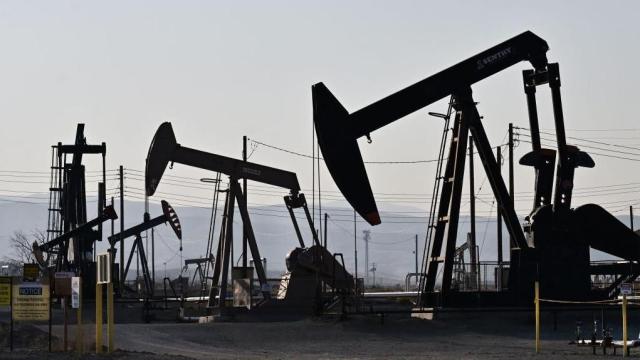Our global carbon budget to avoid permanently reaching 1.5 degrees of warming is smaller than we previously thought, new research says. A study published in the journal Nature Climate Change found that the planet can only emit another 250 gigatons of carbon dioxide for a 50% chance of reaching 1.5 degrees Celsius (2.7 degrees Fahrenheit) of global warming by the end of this decade.
In 2020, scientists with the Intergovernmental Panel on Climate Change (IPCC) stated that the world had about 500 gigatons left in the carbon budget before 1.5 degrees of warming. But this June, IPCC scientists updated that budget to about 250 gigatons of CO2 starting January of 2023. The update came after seeing how, in the last few years, we’ve seen around 40 billion metric tons a year of CO2 emissions, which leaves us a little over six years left before running out of the updated budget. The study released this week looked at this lower budget in further detail to outline that that planet has a 50% chance of limiting warming to only 1.5 degrees by 2029, if we continue to emit at current levels.
Unlike the IPCC report, the report released this week looked at the effect of aerosols alongside the rising carbon emissions in climate models. Aerosols are microscopic particles that include solid or liquid and are suspended in a gas. These particles can have a warming and a cooling effect on our climate, according to NASA. For example, sulfur dioxide, which comes from burning fossil fuels, form droplets in the atmosphere that reflect sunlight and alter cloud brightness. This can have a cooling effect over time. But as the world works to phase out fossil fuel emissions, there will be fewer of these particles. This is technically a good thing, because it means less air pollution globally. But because the Earth will not have the potentially cooling effects of some aerosols, we will need to emit even less CO2 in order to mitigate overall aerosol loss, the study explained.
“The remaining budget is now so small that minor changes in our understanding of the world can result in large proportional changes to the budget,” Robin Lamboll, the lead author of the study, said in a statement. “The lack of progress on emissions reduction means that we can be ever more certain that the window for keeping warming to safe levels is rapidly closing.”
But why exactly is 1.5 degrees Celsius of warming so important? That number may not seem big, but the planet has warmed 1.2 degrees Celsius since the preindustrial era began. This had already fueled worsening extreme weather events. Avoiding further warming beyond the threshold is necessary to stop these events from getting even worse. If the planet reaches two degrees of warming, an additional 65 million people would experience dangerous heatwaves each year, compared to 1.5 degrees of warming.
There is some hope for not reaching 1.5 degrees so quickly. Investments in renewable energy are on the rise throughout the world. Electricity sourced from renewable energy, including solar and wind, surpassed energy produced from burning coal for the first time last year.
But there have been some setbacks. The climate crisis has fueled conditions, including heat and drought, that have worsened wildfires. The widespread fires throughout Canada this summer were so bad, they broke pollution records in the first seven months of this year.
There are so many signs of what would be in store if we don’t decrease our emissions. 2023 has seen the hottest summer on record. And 80% of the world’s population was exposed to elevated heat that wouldn’t have been possible without climate change, researchers found this year. But to avoid extreme weather events from increasing in frequency and intensity, world leaders and industry leaders have to ensure that our Earth doesn’t reach 2 degrees of warming.
“Every fraction of a degree of warming will make life harder for people and ecosystems,” Robin Lamboll said. “This study is yet another warning from the scientific community. Now it is up to governments to act.”
